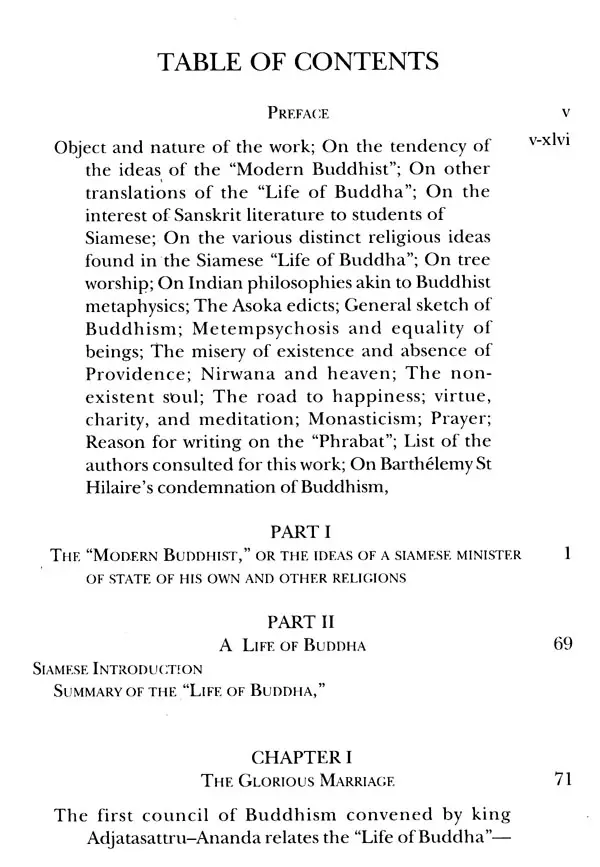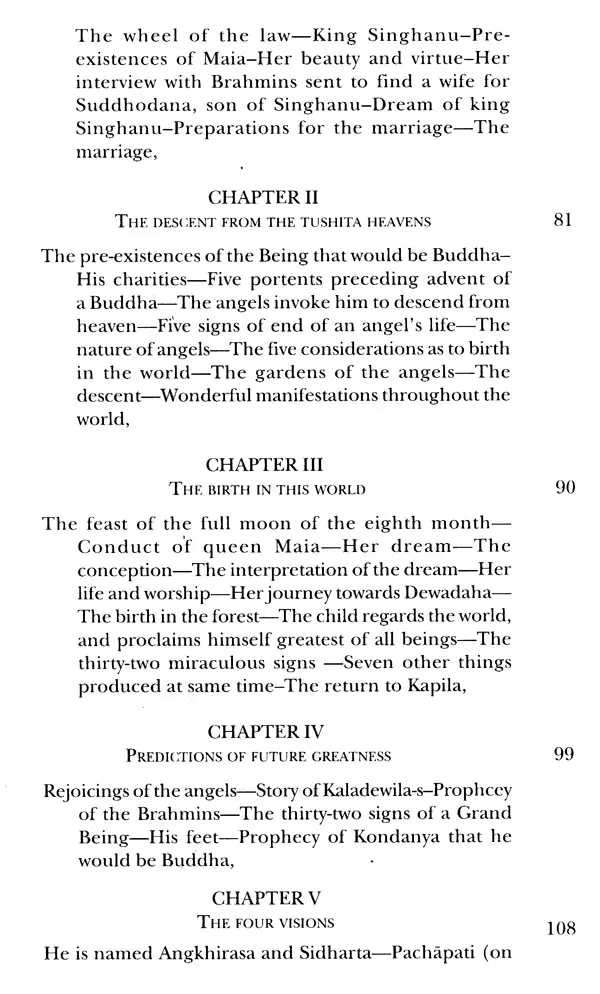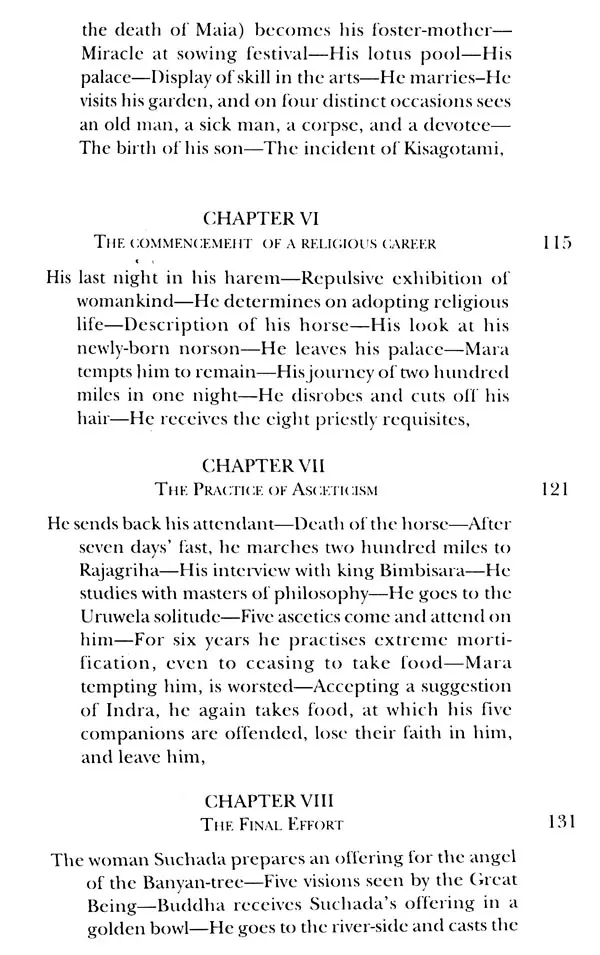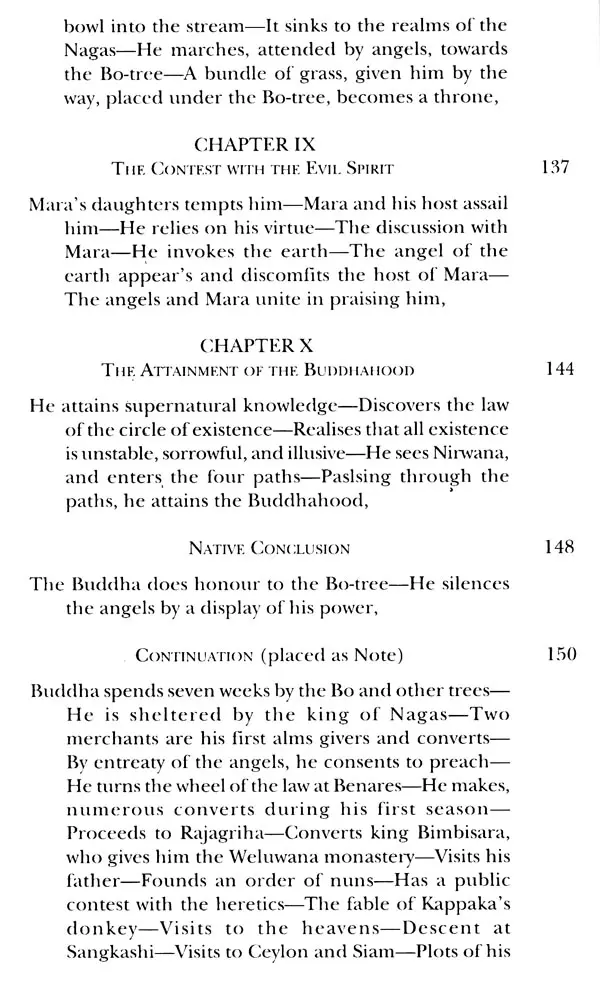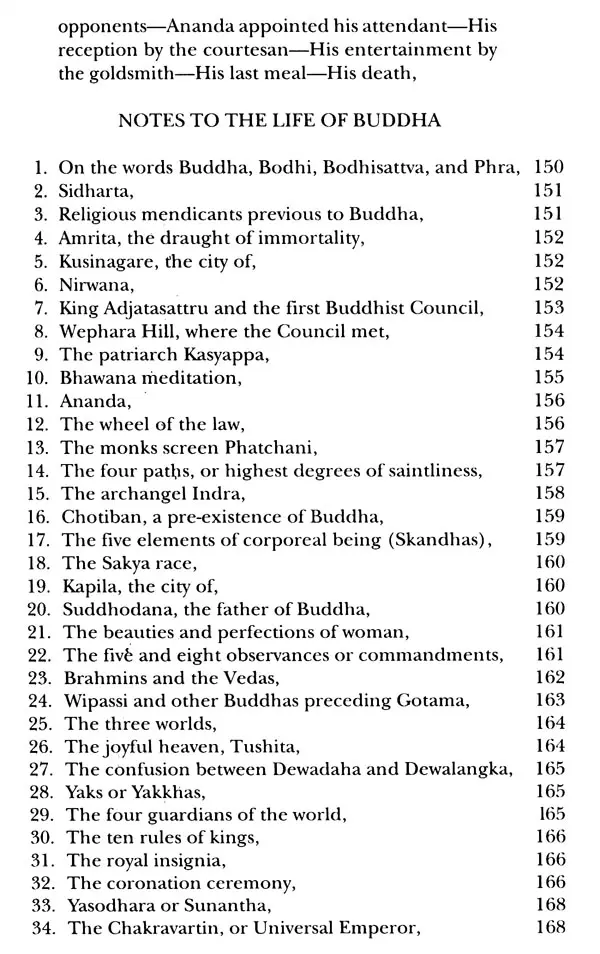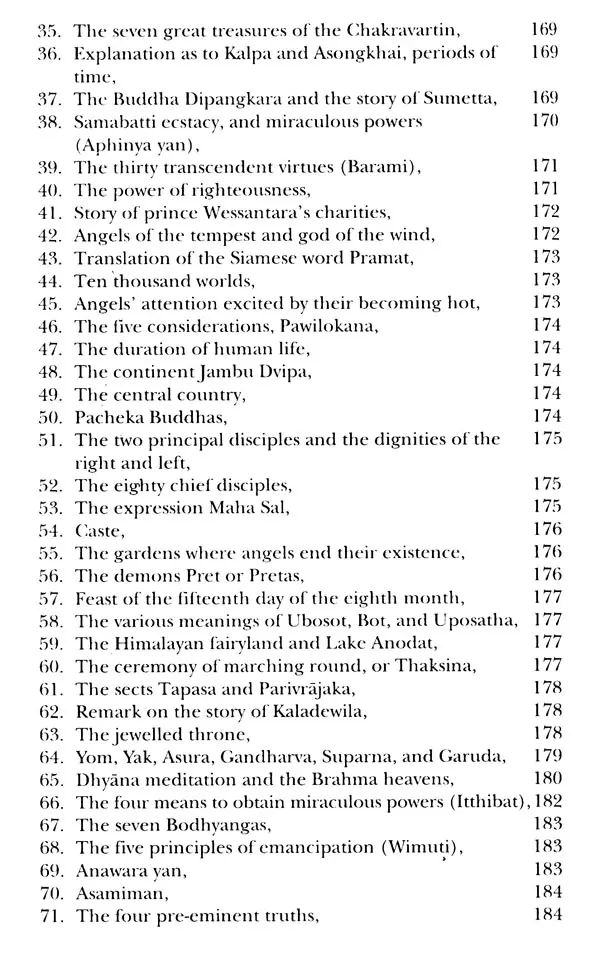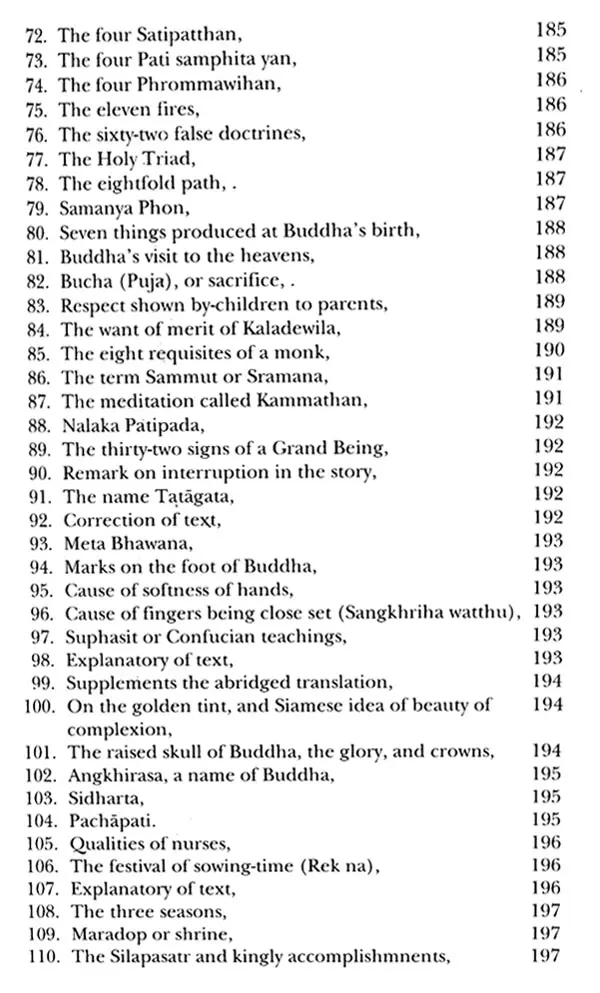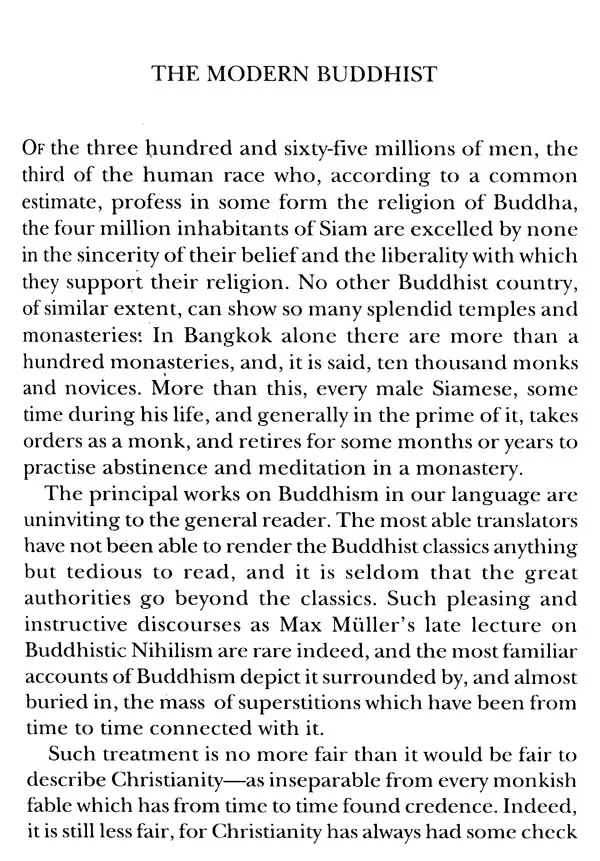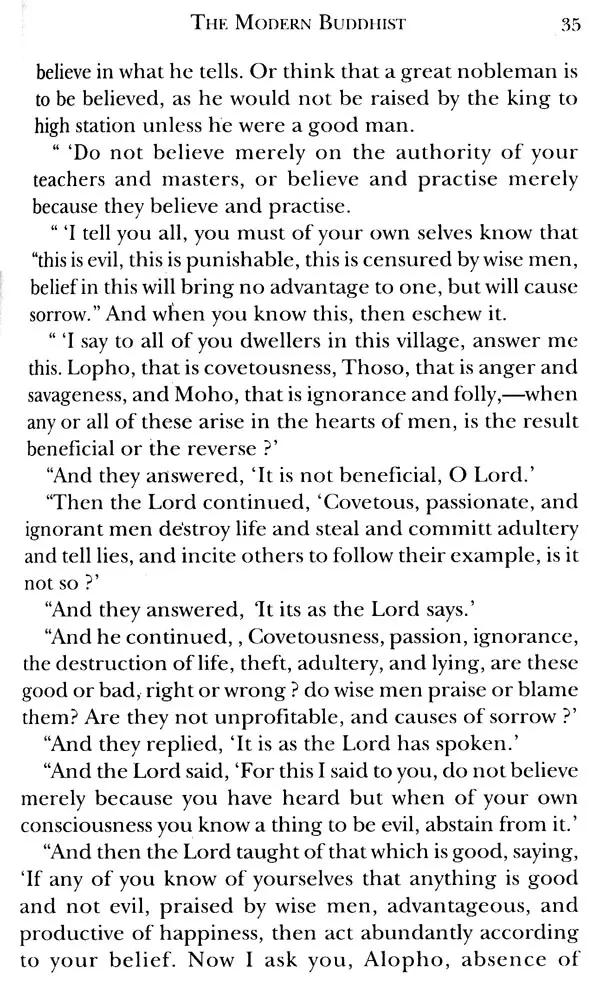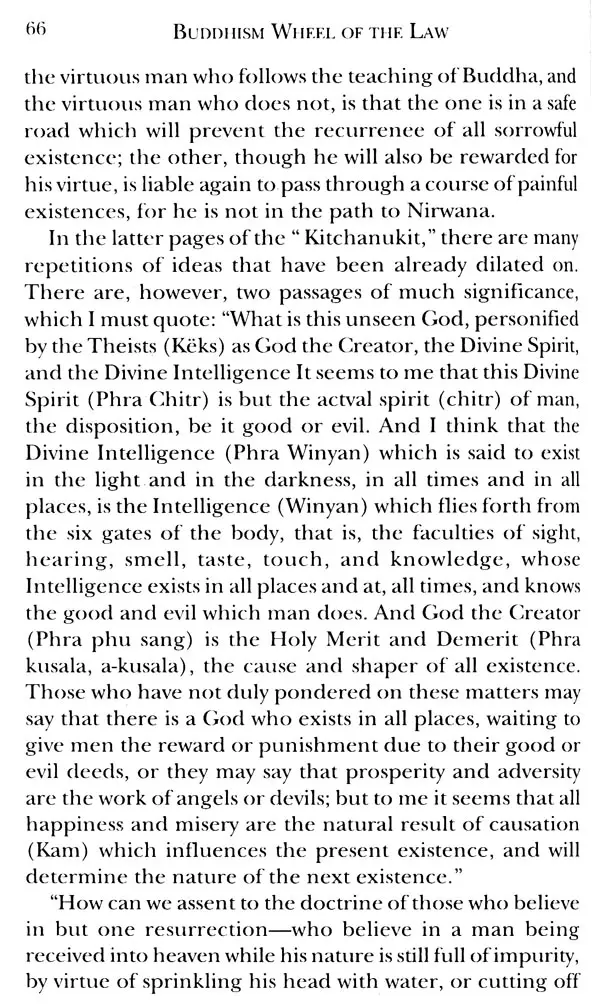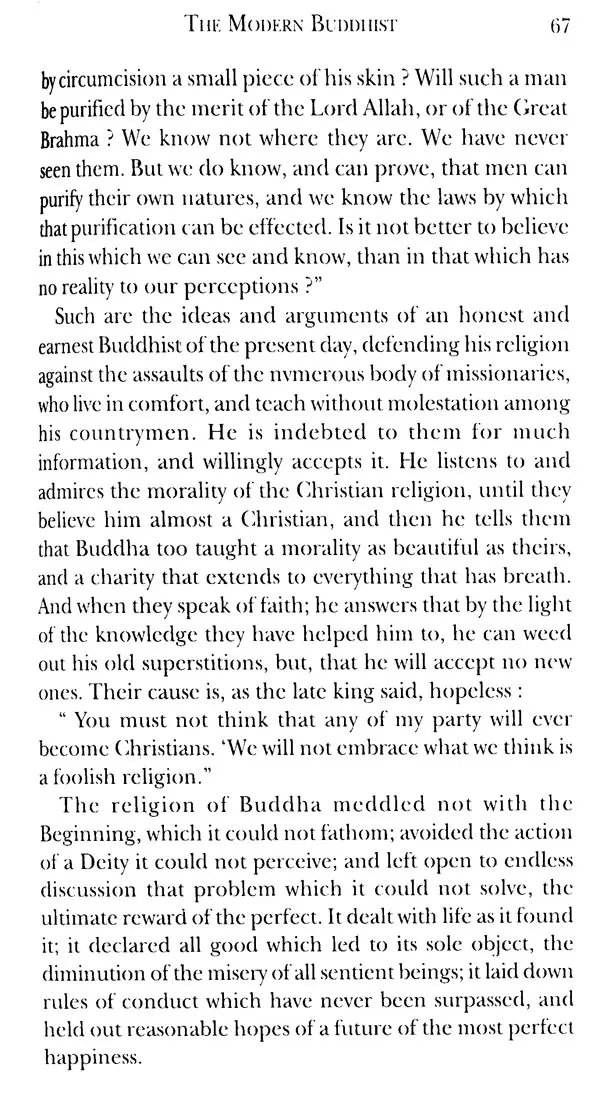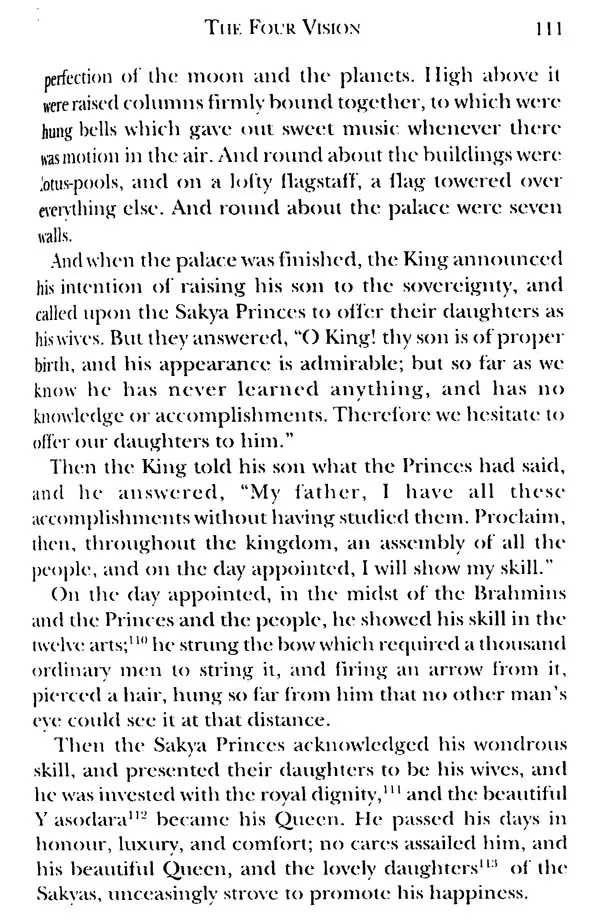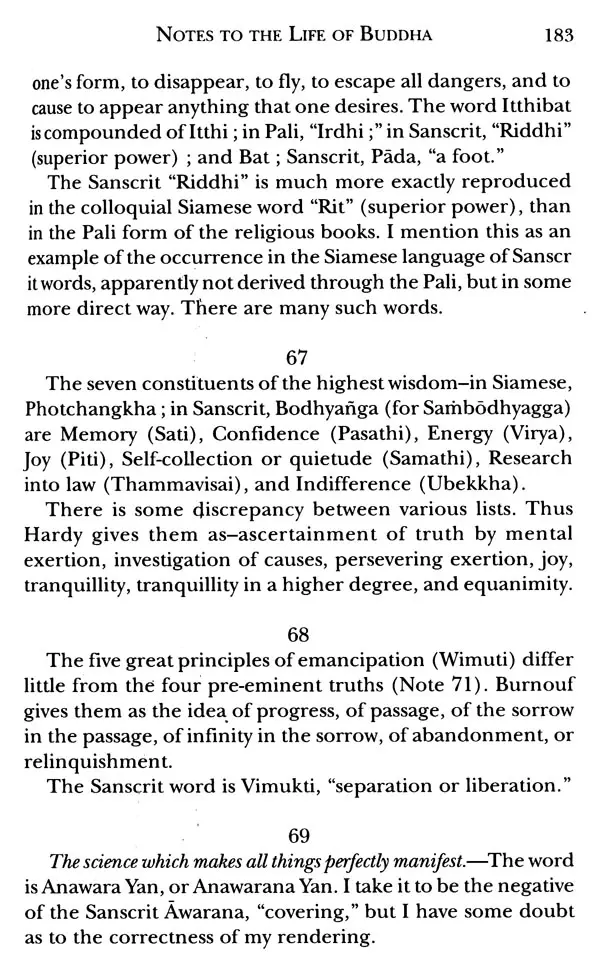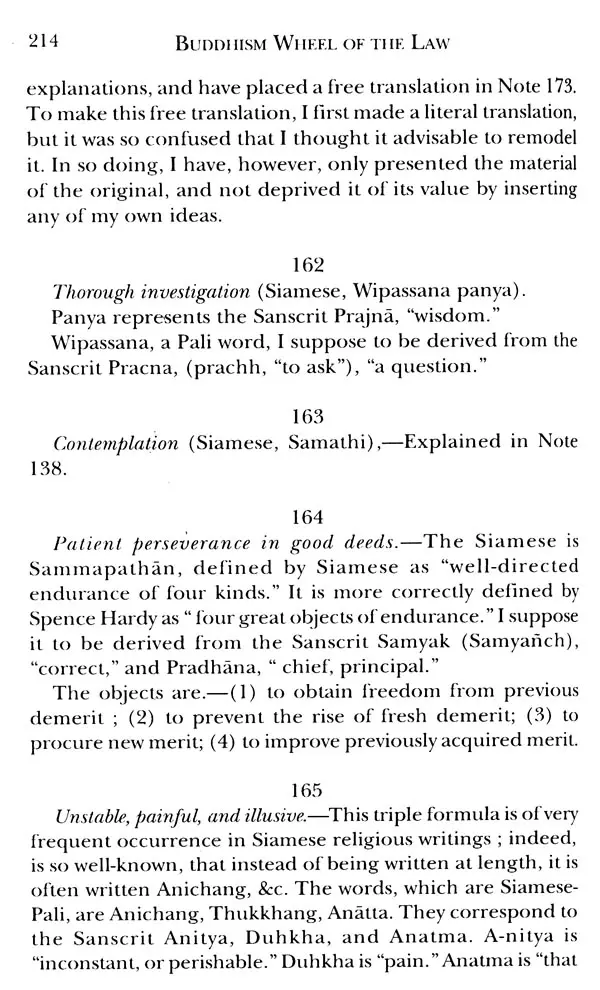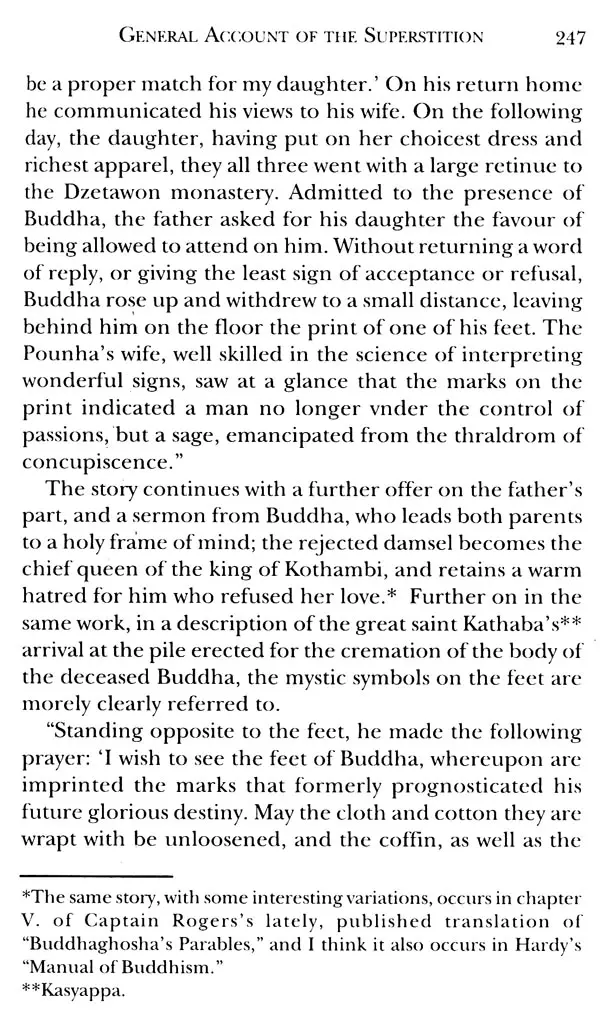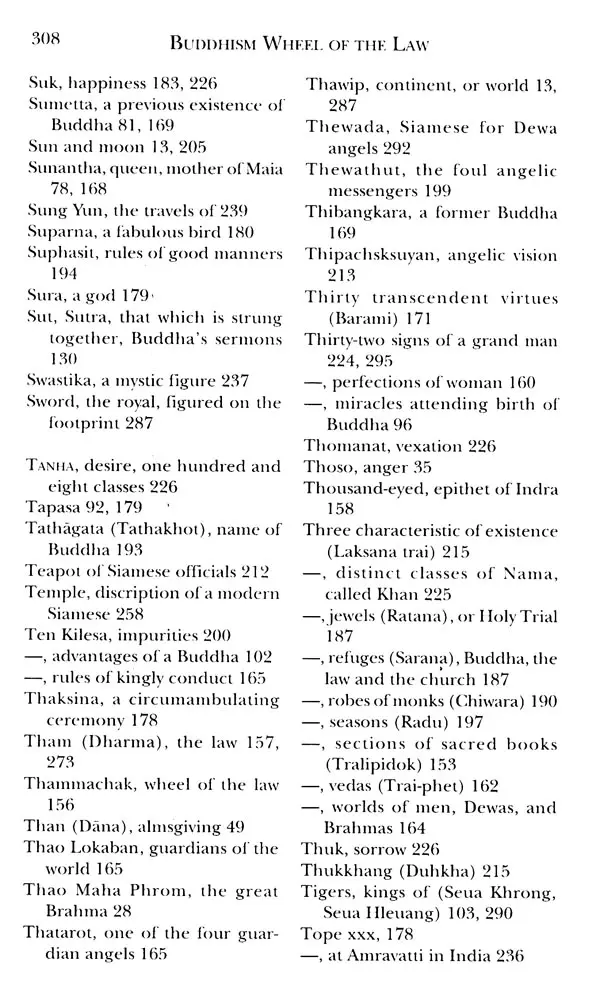
Buddhism Wheel of The Law
Book Specification
| Item Code: | UAI247 |
| Author: | Henry Alabaster, Esq. |
| Publisher: | Eastern Book Linkers |
| Language: | English |
| Edition: | 2017 |
| ISBN: | 9788178543314 |
| Pages: | 362 |
| Cover: | HARDCOVER |
| Other Details | 9.00 X 6.00 inch |
| Weight | 600 gm |
Book Description
These are received well. This enthusiased the author to write the ideas in revised and enlarged form. So the present book. This book has three parts. Part I: "The Modern Buddhist" has the ideas of Siamese minister of state of his own and other religions of the Siam.
Part II: "A Life of Buddha" has chapters I to X and Notes to the life of Buddha (Total Notes: 174)
Part III: "The Phrasal or the Holy Footprint" described in chapter I, II and III.
Appendix: Describes the Thirty-two characterization of a great man.
The Modern Buddhist part of the book explains ideas of Buddhism in present days context of Siamese nobleman Chao Phya Tipakon. The book makes readers known to about culture, literature, secular and religious.
Please note some popular and effective teachings of his : (a) Happy are they who follow religion of their ancestor and indicate its new feature that religion is science of man, and not the revelation of God . . . idea of self is of much consequence to attain the path of Nirvana. (b) Merits and demerits of man account for present existence and will shape future. Object of man must therefore be accumulation of merits. (c) Virtuous and self-denying life, practice of charity and exercises of meditation, self-improvement are valuable guidelines. (d) "Whether or not we have a soul there is something we create our destiny: benefits of our good actions and punishment of our wickedness . . . our Endeavour should be to benefit the world." overview of 'A Life of Buddha.'
Burmese, Ceylonese, Tibetan, Siamese sources on the life of Buddha are consulted to write this work. Notes written to the life of Buddha are important section of the book. Religion-wise historical details on worship and prayers are described in the book. Metaphysical system of Buddhism as emerged in present day study is also part of it. Primitive form of Buddhism, Monastic Buddhism, Brahamanical superstitions and special mentions of present teachings to be a followed for are subjects of this books. Following is an impressive advice describes in the book :
"All existences are states of vanity, sorrow and change, the object of wisely pious must be to escape from . . . by eradicating all delights in worldly pleasure and raising the mind to that intellectual state in which no cleaving to existence but a tranquil readiness to pass into perfect rest of Nirvana."
"The Phrasal or the Holy Footprint" is part III of the book. It shows ultra-superstitions of Buddhism in Siamese people. It is an account of author's journey to holy shrine in Siam.
Now author's own view about the book. "This book of mine is but the superficial work of a man who is no scholar . . . I shall hope a few years hence to rewrite this book in a much more complete manner or some students of Southern Buddhism will write a more thorough book."
The wheel of the law, or Buddhism, is in this volume illustrated by three distinct essays or parts, which exemplify the skeptical phase, the traditionary phase and the ultra- superstitious phase.
The-first part is a revised and enlarged edition of the "Modern Buddhist," the short essay in which I, last year, introduced to European readers a summary of the ideas of an eminent Siamese nobleman on his own and other religions. The Buddhism it teaches, though it has a strong party in favor of it, rejects many superstitions, and so differs from the Buddhism of the generality of educated Siamese, which is illustrated by the second and third parts.
The second part, which illustrates the traditionary phase, is a Buddhist Gospel, or "Life of Buddha," commencing with events previous to his last birth, and, ending with his attainment of the Buddha hood. I have translated it from a popular Siamese work, "Pathomma Somphothiyan," the "Initiation, or First Festival of Perfect Wisdom."
My translation is free or literal, according to my judgment. In many parts I have cut out tedious descriptive passages; in one or two places, duly referred to in the notes, I have corrected presumed errors in my Siamese manuscript; and in chapter X. I have substituted a simple for a confused arrangement. In order that the story of the Life l! 1ay convey a thorough idea of the doctrines of traditionary Buddhism, I have in the notes dilated on every point of Buddhist teaching referred to in the text; and I believe that text and notes combined may be considered to give affair idea of the Siamese view of the character of their great teacher, the principles of the law which he taught, and the observances becoming in his followers.
The third part, which illustrates the ultra-superstitious phase of Buddhism, is an account of the "Parapet, or Siamese Footprint of Buddha," a curious and gross superstition, which offers a very thorough contrast to the ideas of the" Modern Buddhist." In the description of my journey to visit it will be found some notices of the Siamese people, monks, and temples as they are.
Book's Contents and Sample Pages

